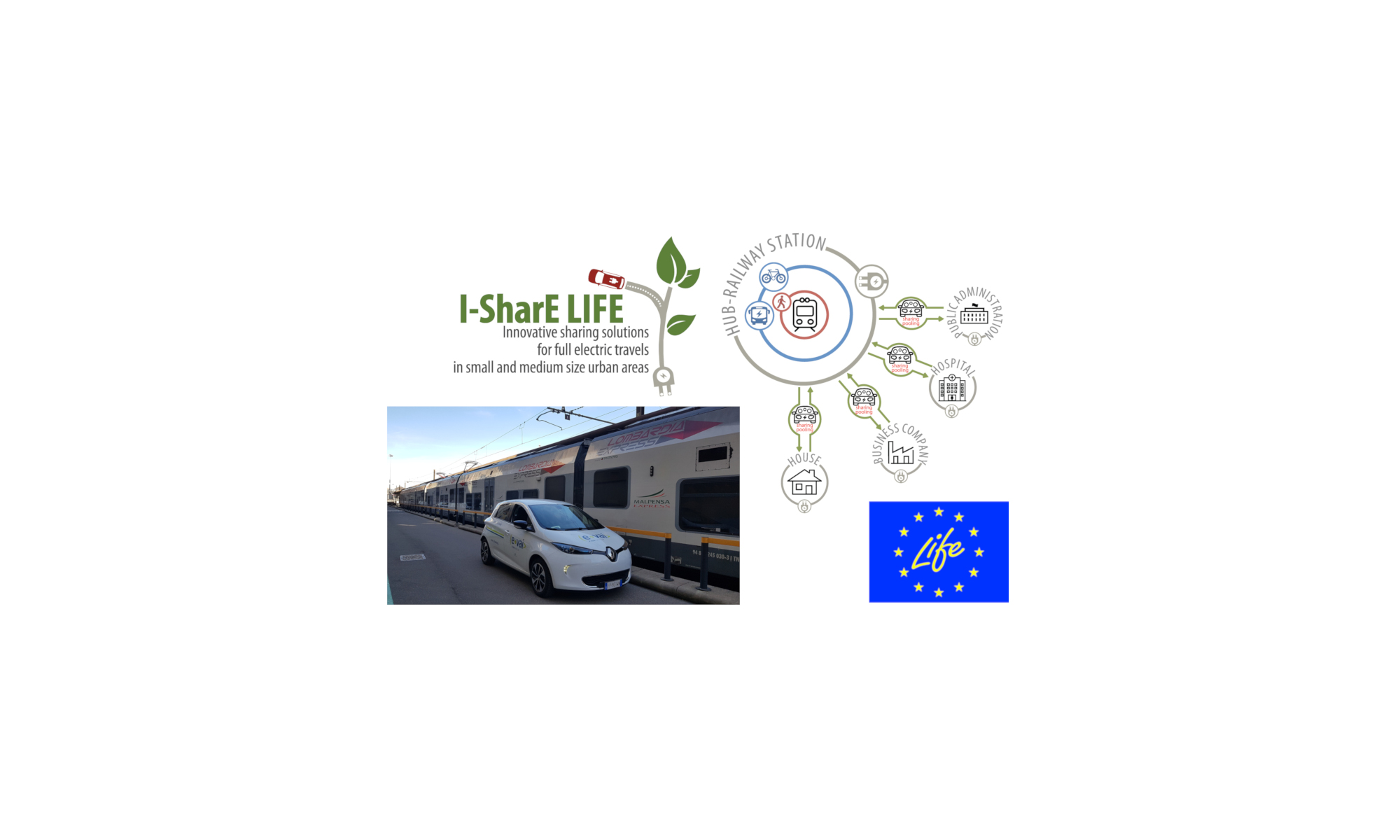I-SharE LIFE is a LIFE ENV&RES demonstration project of a close-to-market nature. As such, the project poses itself four types of objectives, described in the following:
O1) Environmental Objectives:
In the context of the EU directives cited in the proposal, I-SharE LIFE will demonstrate innovative e-carsharing models aiming at addressing pollution and emissions of GHG from road transport, and aiming at reducing pollutants and mitigating emissions of GHG in small to mid-sized urban areas (about 35.000 to 115.000 inh.). See attached files “Indicators of Performance” and related Methodological Framework.
O2) Market Uptake Objectives:
Forecasts of the car sharing global market range between 4 and 7 B$ in 2020. Europe is regarded as the biggest market with a forecasted value of 2.1 B€ in 2021. Actual market of US, Europe, and Asia-Pacific is estimated 0,65-1 B€ in 2015, with a European share of for 61% of the worldwide car sharing membership and nearly 66% of the vehicles deployed, accounting for about 400M€. Car sharing market is expected to quadruplicate in the years from 2016 to 202, and an annual growth rate of about 35% per year is estimated by 2024. I-SharE LIFE Business and Marketing Plans aim at facilitating market uptake in small to mid-sized urban areas, a non-obvious market for car-sharing services.
O3) Demonstration Objectives:
I-SharE LIFE aims at demonstrating the technological and economic feasibility of e-carsharing models of service tailored to smaller urban areas in Lombardy and Croatia, in order to facilitate the uptake of e- and shared mobility in a wider range of urban contexts. I-SharE LIFE includes specific sustainability and replicability&transferability Actions, aiming at guaranteeing the economic feasibility in the 5 demonstration sites and replicability in further 34 sites.
O4) Communication Objectives:
I-SharE LIFE aims at increasing awareness on the opportunities linked to e-car-sharing services, so to generate interest in PAs, enterprises, and the general public at regional, national and international levels. Diversified communication, dissemination and networking activities will contribute to the large scale communication of the project. Behavioural change will be facilitated by demonstration of economic feasibility, the involvement of beta testers and a co-design process aimed at involving relevant stakeholders and at overcoming behavioural barriers.
